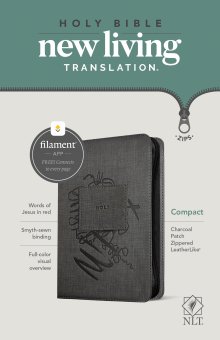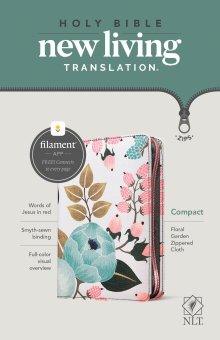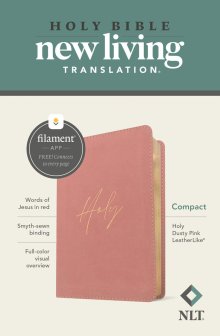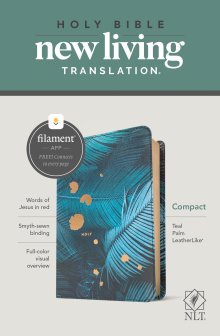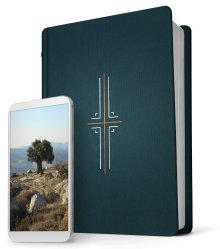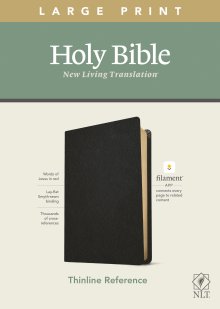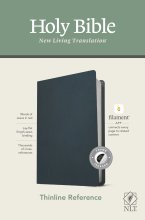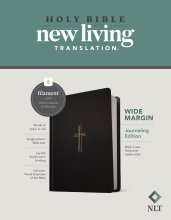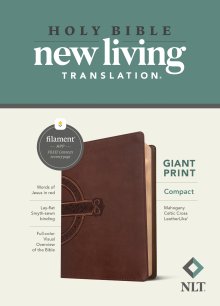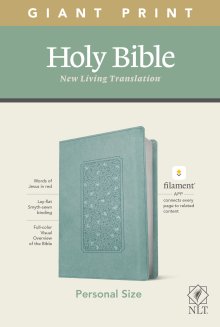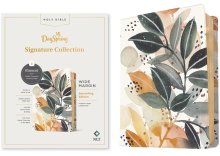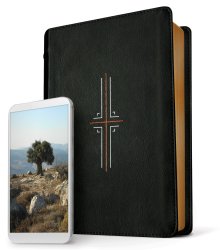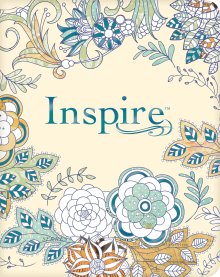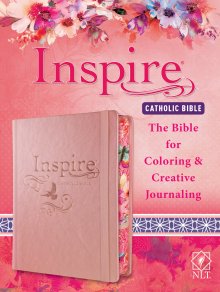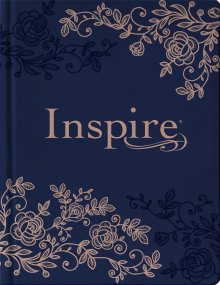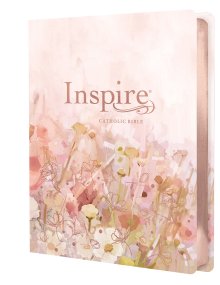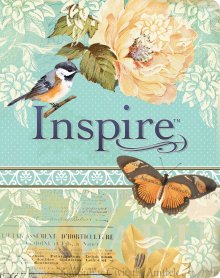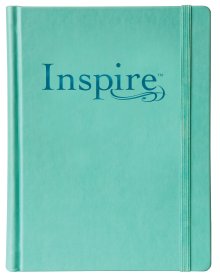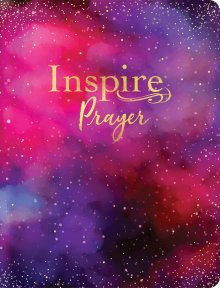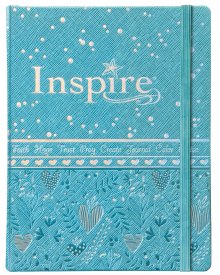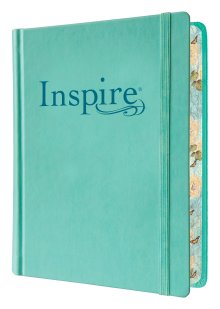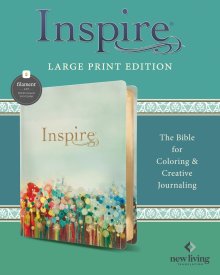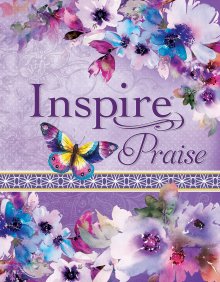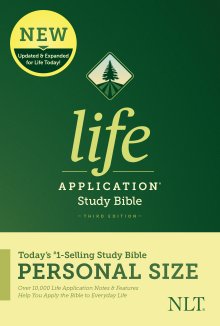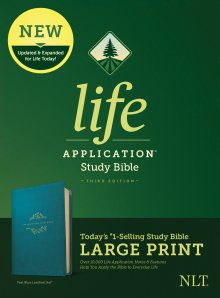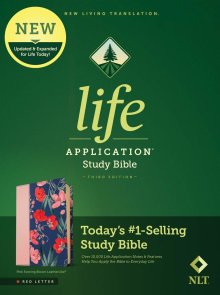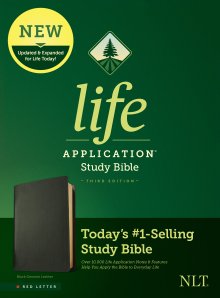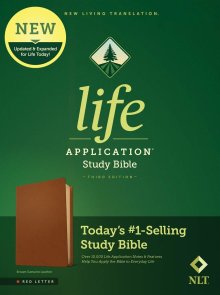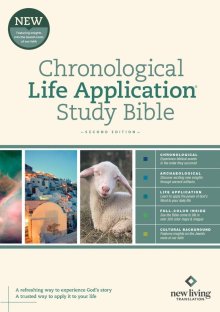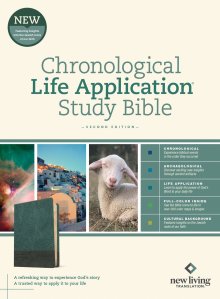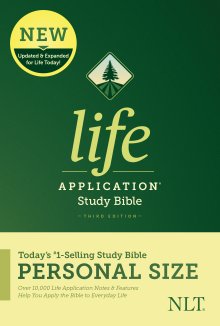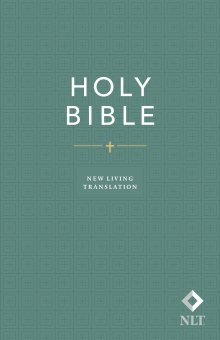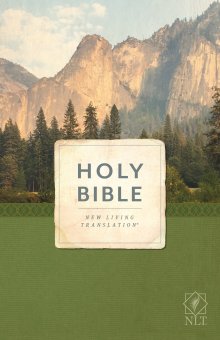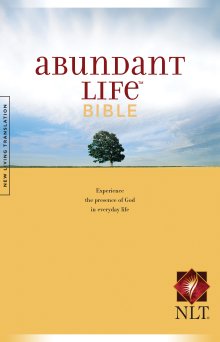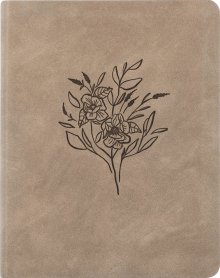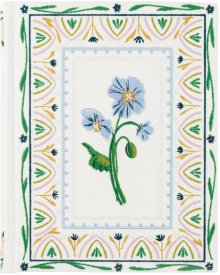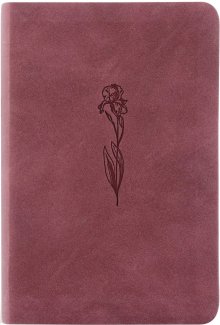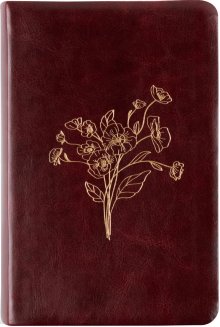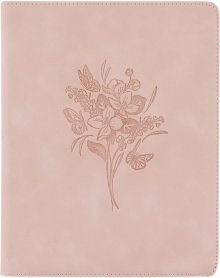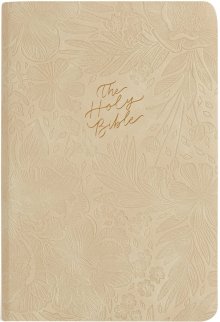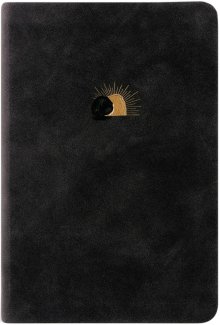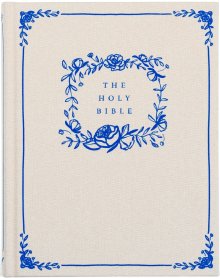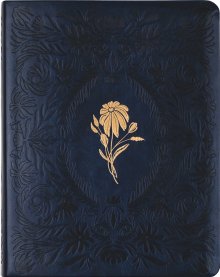What is the New Living Translation (NLT) Bible?
Aaron Lewendon - Eden Bibles & Bible Study Specialist

Choosing a Bible can feel overwhelming. With so many translations and editions, it’s hard to know where to start. This guide breaks down the differences to help you find the right Bible for your needs.
Every Bible translation faces a tension: accuracy or clarity.
Translators walk a line between staying true to the original words and making the message clear for today’s readers.
The New Living Translation (NLT) aims to do both. It keeps the meaning of the original text while using natural, modern English that’s easy to understand.
History of the NLT
Most English Bibles come from earlier translations. It’s a long chain that stretches back centuries.
The New Living Translation (NLT) follows this pattern. As its name suggests, it began as an update to The Living Bible—or at least, that was the plan.
The Living Bible was published in 1971 to help readers understand the King James Bible. The King James Version, first released in 1611, uses language that feels distant today. Words like “thee,” “thou,” and “runneth” were already fading out of use even then. Four hundred years later, English has changed in major ways.
For publisher and writer Kenneth N. Taylor, the KJV's difficulty was becoming an obstacle to faith for too many people. In a Christianity Today article about The Living Bible, Kenneth Taylor wrote that:
“The children were one of the chief inspirations for producing the Living Bible. Our family devotions were tough going because of the difficulty we had understanding the King James Version [...] I would ask questions to be sure the children understood, and they would shrug their shoulders—they didn't know what the passage was talking about.”

While reading the Bible to his children, Kenneth Taylor often had to stop and explain what the passages meant. Eventually, he started rewriting entire sections in everyday language so they could follow along. That’s when the idea struck—why not create a Bible that speaks plainly from the start?
The result was The Living Bible, a paraphrase. It reworded Scripture freely, aiming to capture the message in clear, conversational English.
But the New Living Translation took a different path. It isn’t a paraphrase.
So, what changed?
The NLT was always meant to use everyday English. But unlike a paraphrase, its translators stayed close to the original Hebrew and Greek texts.
Work began in 1989, 18 years after The Living Bible was released. At first, the project was called the New Living Version. That name was dropped to avoid confusion.
As the work grew, so did the team behind it. The revision became so detailed—and involved so many scholars—that the final result wasn’t just an update. It was a full translation in its own right.
How Was It Translated?
You can learn a lot about a Bible by looking at who translated it.
For the NLT, the team was wide-ranging. Though mostly Evangelical, the translators came from different backgrounds and denominations. They were chosen for their skill in handling the original texts—both in meaning and context.
Alongside them were experienced English stylists. Their job? To make sure the final text spoke clearly in modern English without losing the heart of the message.
The Old Testament team based their work on the Masoretic Text—the standard Hebrew and Aramaic version of the Hebrew Bible. They also consulted the Dead Sea Scrolls, the Septuagint, and selected Greek and Latin texts.
For the New Testament, the Greek New Testament and the Novum Testamentum Graece (a critical edition of the New Testament in Greek) were employed.
The translators stayed close to the original text while making sure it made sense to modern readers. This approach is called dynamic equivalence.
Instead of translating word for word, dynamic equivalence focuses on meaning. It finds the closest match in the target language—while also making sure the result is clear and natural for today’s reader.
It keeps the message faithful, without sounding outdated.
How Accurate is the NLT Bible?
The NLT uses dynamic equivalence—but how far does that move it from a literal translation?
To answer that, it helps to understand two common terms in Bible translation: word-for-word and thought-for-thought.
Word-for-word translations (formal equivalence):
aim to stick closely to the original text. They preserve structure and vocabulary, even if that makes the result harder to read. These Bibles often require background knowledge of ancient culture and context.
Thought-for-thought translations (dynamic equivalence):
take a different approach. They focus on meaning, not just words. Translators consider the broader context and aim to express the original message in clear, modern language.
Think of it like this:
A word-for-word Bible is like using Google Translate. A thought-for-thought Bible is like translating a poem—preserving the meaning and tone, not just the words.
So where does the NLT fit?
The NLT is firmly in the thought-for-thought camp. It uses dynamic equivalence to stay true to the message of Scripture, while making it readable and relatable today.
How Easy is the NLT to Read?
The NLT Bible is written at a 6th Grade Reading Level. This means that readers from the ages of 11 and up should be able to confidently read the majority of the NLT text and roughly understand what it means.
What determines this level is the total number of unique words and sentences, as well as sentence length and the length of the words themselves. Other grammatical features also carry weight in the score. The reading level doesn’t take into account any understanding of history and context. Just the words and grammar of the text.
As an example, this sentence you are currently reading would score at a Grade Nine on the readability test.
This sentence would be at Grade Two.
Common uses of the NLT
The New Living Translation quickly rose in popularity after its release. For a time, it even overtook the NIV as the best-selling Bible in the U.S. Today, the two often trade places, but the NLT remains one of the most widely read and trusted translations.
Its strength lies in accessibility. The NLT connects with a broad range of readers, from children to new believers to lifelong Christians. It’s clear without being shallow, and faithful without being rigid.
In that way, it still reflects Kenneth Taylor’s original vision for The Living Bible. The NLT simply reached that goal through careful translation rather than paraphrasing.
Churches, small groups, outreach teams, and individuals all use the NLT for study and spiritual growth.
Different editions of the NLT
The NLT has been revised several times since its release.
In 2004, eight years after the first edition, a major update was published to improve accuracy and clarity. This included refining key words and phrases, reshaping some passages from prose into poetry, and adding marginal notes to explain translation choices. Some literary features—like repetition for emphasis—were also restored to better reflect the style of the original texts.
A smaller update followed in 2015. This revision made minor adjustments to select verses, including word changes and slight edits for flow and precision.
All in all, there are three main editions of the NLT Bible.
To see which version you have, check the copyright page near the front of your Bible.
What Are NLT Filament Bibles?
Many newer NLT Bibles come with Filament, an app that adds depth without adding bulk. These Bibles look and feel like a regular print edition, but each page includes a small icon you can scan with your phone using the free Filament Bible app.
Once scanned, the app unlocks:
- Study notes that help you understand the passage
- Devotionals to guide reflection
- Videos and maps for added context
- Word studies and profiles to explore themes and people in more detail
Filament keeps the Bible clean and uncluttered, while still giving you access to rich digital resources whenever you want them.
You can browse Filament-enabled NLT Bibles here.
Example verses from the NLT Bible
For this is how God loved the world: He gave his one and only Son, so that everyone who believes in him will not perish but have eternal life. - John 3:16
For I know the plans I have for you,” says the Lord. “They are plans for good and not for disaster, to give you a future and a hope. - Jeremiah 29:11
Instead, be kind to each other, tenderhearted, forgiving one another, just as God through Christ has forgiven you. - Ephesians 4:32
NLT Bibles You Can Buy Today
NLT Inspire Colouring and Journaling Bible
The Inspire Bible combines a study Bible with space for creative expression. It invites readers to write, colour, draw, and journal as they reflect on Scripture.
As the first Bible of its kind, Inspire has become especially popular with women of all ages. It offers a quiet, creative way to engage with God’s Word—one that blends reflection with art.
NLT Life Application Study Bible
Discover all the ways the Bible speaks to life. The ever-popular NLT Life Application Study Bible is now in its third version, with even more notes and extras that connect your story with that of God’s.
“With a fresh two-colour interior design and meaningfully updated study notes and features, this Bible will help you understand God's Word better than ever. It answers the real-life questions that you may have and provides you with practical yet powerful ways to apply the Bible to your life every day.”
NLT Outreach Edition
Whether you want to simply give the NLT a try or are seeking an accessible evangelism resource, the outreach edition of the NLT provides you with an affordable way to do just that. Featuring the whole text of the New Living Translation Bible, this paperback edition is clear and even features a 365-day reading plan.
NLT Hosanna Revival Bibles
Hosanna Revival is a design-focused publisher known for creating beautiful, Scripture-centered tools that help people engage deeply with God’s Word. Their NLT Bibles are among the most popular, combining the trusted New Living Translation with hand-painted covers and elegant design. Inside, you'll find wide margins for journaling, thick cream paper, and a clean, single-column layout. These Bibles are especially loved by women and younger readers who want a Bible that’s both personal and visually inspiring.
Frequently Asked Questions
Every day, people turn to the Bible for questions about faith, life, meaning, Christianity and countless other topics. But as well as having questions for the Bible, there are also many questions asked about the Bible. Here we’ll try to answer some of those most asked questions.
Is the NLT a paraphrase?
No, the New Living Translation (NLT) is not a paraphrase. It’s a full translation of the Bible, based on the original Hebrew, Aramaic, and Greek texts. The translators used a method called dynamic equivalence, which focuses on conveying the meaning of the original text in clear, natural English. While it reads smoothly and is easy to understand, the NLT stays rooted in careful scholarship, not loose rewording like a paraphrase.
Is the NLT Catholic?
The standard New Living Translation (NLT) is not a Catholic edition. However, a Catholic version does exist. It includes the Deuterocanonical books (often called the Apocrypha) and has received approval for use by the Catholic Church. This edition is known as the New Living Translation Catholic Edition (NLT-CE) and is available for those looking for a Bible that follows the Catholic canon.
Catholic versions of the NLT Bible are available here.
Is NLT a Study Bible?
The New Living Translation (NLT) is a Bible translation, not a study Bible on its own. However, many NLT editions are available as study Bibles. These include added features like commentary notes, maps, charts, book introductions, and application tools. Popular examples include the NLT Life Application Study Bible and The Filament-Enabled NLT Study Bible, which pairs the print Bible with digital study resources through the Filament app.
NLT Study Bibles are available here.
Other Bible Translations:
Click on any of the images below to learn all about the stories behind some of the world's most widely-read Bible translations.
Latest Blogs

Bible Verse
Bible Verses About Peace
Read Bible Verses About Peace and discover how the Bible still speaks today.

Bibles
Gen Z and the Rise of Catholic Faith: Bible Trends to Watch
When it comes to church, Gen Z isn’t walking away—they’re walking somewhere unexpected.

Children's bibles
What is a Storybook Bible?
A storybook Bible is a children's book that presents narratives from the Bible in a simplified and engaging manner, tailored for young readers. These books combine vivid storytelling with colorful illustrations to make the teachings of the Bible accessible and captivating for children.

Bible
What is the New International Version (NIV) Bible?
Finding the right Bible isn’t easy. There are dozens of translations and hundreds of editions to choose from. Our new series of guides is here to answer your questions about the different Bibles on offer today.

Bible
What is the New Living Translation (NLT) Bible?
Finding the right Bible isn’t easy. There are dozens of translations and hundreds of editions to choose from. Our new series of guides is here to answer your questions about the different Bibles on offer today.

Biography
Author Interview: Arthur White on Lifting the Darkness and 30 Years of Tough Talk
Authentic interview author and speaker Arthur White, on 30 Years of the ‘Tough Talk’ ministry.


